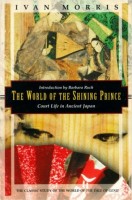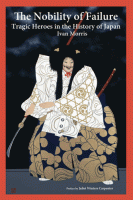 Author: Sei Shōnagon
Author: Sei Shōnagon
Translator: Ivan Morris
U.S. publisher: Columbia University Press
ISBN: 9780231073370
Released: December 1991
Original release: 11th century
I’ve recently developed a particular interest in Heian-era Japan and literature. The Pillow Book of Sei Shōnagon is an important eleventh-century work that provides a glimpse into Heian society, especially that of the court and higher classes. Shōnagon was a lady-in-waiting to Empress Teishi as well as a contemporary and rival of Murasaki Shikibu, the author of The Tale of Genji and a lady-in-waiting who served Empress Shōshi. The Pillow Book of Sei Shōnagon has been translated into English, both in part and in its entirety, many times, the first translation appearing as early as 1889. Out of all of the English translations, I gravitated towards that of Ivan Morris’ whose works of nonfiction The World of the Shining Prince and The Nobility of Failure I thoroughly enjoyed. Excerpts of The Pillow Book of Sei Shōnagon were actually included in The World of the Shining Prince and I enjoyed his translation. Morris’ complete two-volume translation of The Pillow Book of Sei Shōnagon was published in 1967 by Columbia University Press. However, in 1971, an edited and abridged translation began to be released. It is this single-volume edition that is now more readily available and generally more approachable for the average reader, not to mention the version of The Pillow Book of Sei Shōnagon that I myself read.
The Pillow Book of Sei Shōnagon is a diary of sorts, a collection of thought and observances, lists and poetry. Most of the individual sections are short, some only a few paragraphs and the longest still being under fifteen pages. The volume isn’t arranged chronologically, some parts can’t even be definitely dated, but seeing as each section stands perfectly well on its own and there is no overarching “plot,” this isn’t particularly problematic. Shōnagon relates events and ceremonies that take place at court and at shrines, but she also details more personal affairs and gossip as well. The Pillow Book of Sei Shōnagon mostly deals with Heian-ea nobility and their lives, but the lower classes are occasionally mentioned, too, though usually with some disdain. While relatively little is known about Shōnagon outside of her own writings, it is clear she was a well-educated and intelligent women with a strong personality that brought her admirers as well as a those who could be considered her opponents.
While I haven’t read other translation of The Pillow Book of Sei Shōnagon and so am not able to offer comparisons, I was very pleased with Morris’ translation. I found it easy to understand, pleasant in its style, and overall very enjoyable. Morris’ translation presents an excellent balance between the literal and the literary. It reads well in English and yet retains a sense of poetic elegance. This particular edition of The Pillow Book of Sei Shōnagon also includes additional material for readers who are interested in the works’ specific historical context or in Heian-era Japan in general. Morris’ notes are copious and entire appendices are devoted to the calendar and time system, the government and its structure, places and their accompanying maps, an illustrated guide to clothing, households, carriages, instruments, and other daily objects, as well as several chronologies. A list of recommended reading is also given. In all, the supplementary material accounts for about a third of the volume’s total length.
I found The PIllow Book of Sei Shōnagon to be a very enjoyable and even charming read. However, it’s not a work to be read all at once or in a hurry. Instead, savoring a few sections here or there will generally provide a more pleasant reading experience. Shōnagon’s personality really comes through in her writings. She’s witty and sharp-minded, but also occasionally mean-spirited and a little self-important. Granted, as The Pillow Book of Sei Shōnagon serves at least in part as her diary, it’s not too surprising that she allows herself to express herself so freely within its pages. However, eventually she was quite aware that others were and would be reading the work as well. Even though centuries have passed since The Pillow Book of Sei Shōnagon was first written and compiled, it’s noteworthy how engaging and approachable the work can be for modern readers. Shōnagon was a keen observer of the people and society of her own time, but her humor and insights into human nature can still be appreciated even today.


